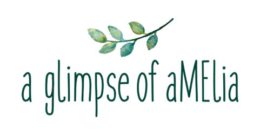Lucas’Paw Paw Ointment
SIMPLY TUESDAY REVIEW
 Fermented Fresh PawPaw Fruit= Paw Paw, also known as Papaya, is a nutrient-rich fruit that is packed full of vitamins, minerals and antioxidants. It is also calcium rich and includes high levels of potassium, magnesium and iron
Fermented Fresh PawPaw Fruit= Paw Paw, also known as Papaya, is a nutrient-rich fruit that is packed full of vitamins, minerals and antioxidants. It is also calcium rich and includes high levels of potassium, magnesium and iron Rhus Succedanea Wax= Rhus Succedanea Fruit Wax, also called Japan Wax, is obtained from the berries of the sumac Rhus. Plant waxes help to keep an emulsion from separating into its oil and liquid components, especially in cosmetics and personal care products that require a creamy consistency.
Rhus Succedanea Wax= Rhus Succedanea Fruit Wax, also called Japan Wax, is obtained from the berries of the sumac Rhus. Plant waxes help to keep an emulsion from separating into its oil and liquid components, especially in cosmetics and personal care products that require a creamy consistency. Glycerine= By product of soap manufacture, Glycerol. May be animal derived or Palm oil derived. Safe for most people. Not assessed for safety in cosmetics as per CIR. Some animal studies have shown adverse affects. Best avoided if vegan.
Glycerine= By product of soap manufacture, Glycerol. May be animal derived or Palm oil derived. Safe for most people. Not assessed for safety in cosmetics as per CIR. Some animal studies have shown adverse affects. Best avoided if vegan. Canola Oil= Used as a skin conditioning agent. Non Tox
Canola Oil= Used as a skin conditioning agent. Non Tox Hydrogenated Castor Oil= Safe if used up to 39% of product. End product is hydrogenation of castor beans, trihydroxystearin.
Hydrogenated Castor Oil= Safe if used up to 39% of product. End product is hydrogenation of castor beans, trihydroxystearin. Beeswax- Beeswax helps to keep an emulsion from separating into its oil and liquid components, especially in cosmetics and personal care products that require a creamy consistency. These waxes also increase the thickness of the lipid (oil) portion of solid and stick-like products such as lipstick, giving them structure, allowing for a smooth application.
Beeswax- Beeswax helps to keep an emulsion from separating into its oil and liquid components, especially in cosmetics and personal care products that require a creamy consistency. These waxes also increase the thickness of the lipid (oil) portion of solid and stick-like products such as lipstick, giving them structure, allowing for a smooth application. Corn Starch= Corn Starch is used in cosmetics to thicken the cosmetic production. It imparts a silky but dry feel and is good at absorbing excess Oil
Corn Starch= Corn Starch is used in cosmetics to thicken the cosmetic production. It imparts a silky but dry feel and is good at absorbing excess Oil Potassium Sorbate= Food additives such as dyes, thickeners and preservatives may cause an allergic or intolerance reaction. As a preservative, potassium sorbate is regarded as safe and non-toxic, prolonged use most especially in large amounts can potentially lead to allergies.
Potassium Sorbate= Food additives such as dyes, thickeners and preservatives may cause an allergic or intolerance reaction. As a preservative, potassium sorbate is regarded as safe and non-toxic, prolonged use most especially in large amounts can potentially lead to allergies.The fruit is received fresh to our factory in Brisbane where we ferment it under strictly controlled conditions. Every item of fruit we use is hand selected. Once the fruit is fermented to just the right level we can use it to make the ointment. The finished product contains 0.1mg/g of Potassium Sorbate which acts as a preservative.
However the Lucas website says- It is a pharmaceutical grade base that is tested and screened for the level of total polycyclic aromatic hydrocarbons. Penreco USP grade Petrolatums are not mutagenic or toxic to reproduction.
Polycyclic aromatic hydrocarbons (PAHs) are a group of more than 100 chemicals that are also called polynuclear aromatic hydrocarbons. PAHs are released from burning coal, oil, gasoline, trash, tobacco, and wood.
Penreco petroleum’s- Penreco produces high quality White Petrolatum that complies with White Petrolatum USP requirements and FDA requirements ( 21 CFR 172.880)
The components for petrolatum come from paraffinic lube oil refineries. Petrolatum can be considered as a combination of mineral oil and petroleum wax. The separation of wax components from oil involves solvent dewaxing and the filtration of the wax from a solvent-oil slurry at low temperatures. However, the best petrolatum components come from waxy oils that have not had the microcrystalline wax separated from the oil. This “natural petrolatum” has a far better propensity to hold the oil and waxy components together and therefore shows less oil bleeding or syneresis over time. This is not to say that mineral oils or waxes are not added to the petrolatum. They may be added to produce specific grades of petrolatum with slightly different physical properties.
The purification process for making petrolatum usually involves hydrogenation and/or adsorption. The hydrogenation reaction is carried out on a catalyst at high temperature and pressure. This process saturates many of the aromatic compounds and removes polar hydrocarbons such as those containing sulfur, nitrogen or oxygen. The absorption process is accomplished by percolating the melted liquid petrolatum over an absorbent such as clay or bauxite. The product off the absorption step is lower in aromatic content, and lower in polar hydrocarbon content. As with hydrogenation, the resulting petrolatum is much lighter in color than the starting material. Most importantly, petrolatum derived from these processes passes the FDA purity test that limits the polynuclear.

